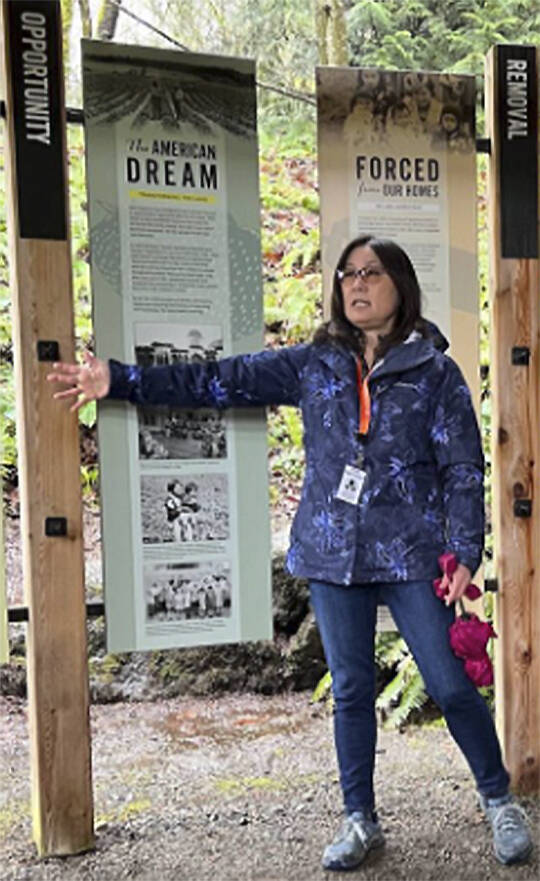The story of the Bainbridge Island Review’s confident stance in support of Japanese Americans during the polarizing course of World War II journalism has managed to not only stay alive over the course of 80-plus years on BI, but remains just as significant to those who know the stories by heart and those who are just beginning to hear them.
Lilly Kitamoto Kodama remembers just how local the paper truly was in her early years living on BI with her family, the same time period the paper was owned by Milly and Walt Woodward.
“The local newspaper was a Twitter and Facebook of the time,” she recalled. “It’s not like today they would have printed things, you know, about when people got married and had people for tea. All those things.”
That marriage comment was no joke either, Kodama having recently rediscovered the Sept. 1, 1955 article of her own “Double-Ring, Candlelight Ceremony” in the Japanese Baptist Church in Seattle. “It goes into so much detail about our wedding,” she said with a laugh. “See, this is how the Bainbridge Island Review was like, if you wanted to know from a long time ago.”
It wasn’t just the details that Kodama and other Japanese Americans remember from that time. It was the cut-to-the-chase honesty that the Woodwards wrote in their papers, especially concerning the unjust incarceration of families like Kodama’s at internment camps.
She was 7-years-old at the time, a second-grade student, when the time came for her family to be moved far away from home in 1942. The full burden of reality did not hit her at the time, her childlike imagination taking her to Disneyland levels of enthusiasm.
She said, “We all at least had our mommas with us, and they were trying to make life as normal as possible. We were taking the ferry to Seattle, and it was a big deal back then. I couldn’t sleep the night before I was so excited.”
Meanwhile, those mothers and fathers alike struggled with the forced changes, but the paper played an instrumental role inside and outside the camps. Kodama recalled the Review not just taking on the local stories of “gas rationing and the torpedo landing,” but the news inside the internment camps as well, as if it was local news.
It was coverage like this that allowed families like hers, though not all of them, to return to BI after the war — not as perceived enemies, but as honored members of the community.“We were welcomed back,” she said. “I know (the paper) was the reason we were welcomed back. We were still the same families.”
The Woodwards coverage of the internments is a story that continues to live close to the hearts of those like Kodama, but for those who have come to live on BI more recently, the story hits just as hard.
Ellen Sato Faust, executive director of the BI Japanese American Exclusion Memorial Association, came to BI in 2013 and described herself as just like any other tourist who had come to discover the memorial and the Woodwards editorials.
“My father came from Tacoma, which is larger and had a large Japantown,” she said. “There is no ‘Japantown’ there anymore whereas fifty percent of people came back here, which doesn’t seem like a lot but is a lot.”
BI’s welcoming them back was a new story to Faust, who said she had never heard anything like it in a period of history that saw the Japanese-American culture and lifestyle practically done away with.
“It is a really rare story,” she said. “I don’t think even native Bainbridge Islanders realize the contrast between what that provided, that the fact that they were in contact throughout the war with people back home. People back home were aware of what was going on with the Japanese folks that had left.”
The history of the internment stories in other parts of the country continue to be unspoken, erased and covered up, but on BI people like Kodama and Faust continue to tell the history, to never let it be forgotten.



